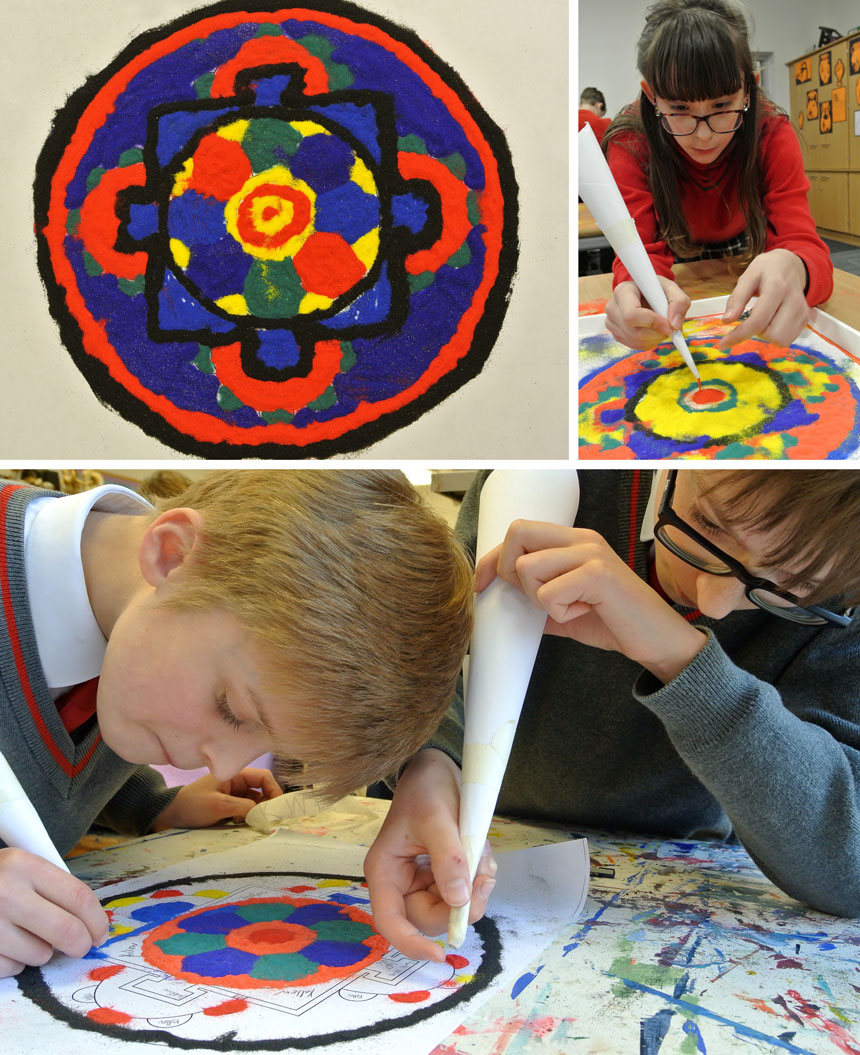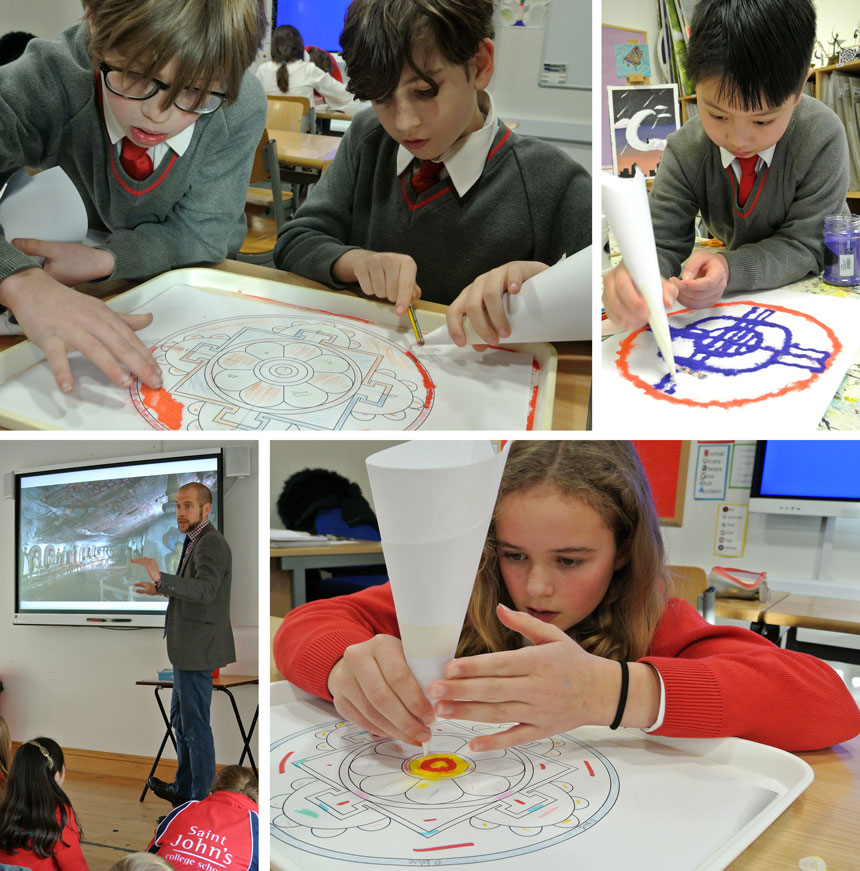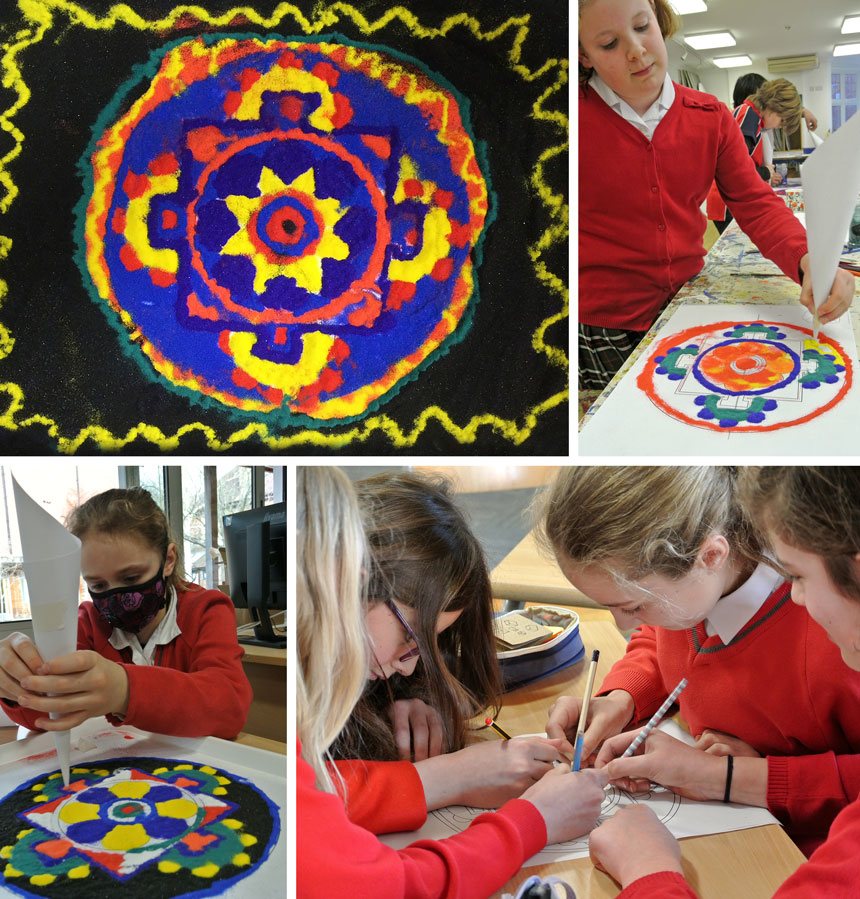Form 4 took part in a Thursday Afternoon Enrichment session that combined a talk about Buddhism, as part of their Religious Studies work, as well as an insight into Buddhist art with sand mandala creations. Director of Studies, Mr Tristan Igglesden, gave an insightful presentation about his recent trip to Sri Lanka and his visit to the World Heritage site at the Dambulla Buddhist caves. The cave monastery is a well-preserved cave temple complex of five caves, each with beautiful and extensive Buddhist mural paintings on the walls and ceilings. Besides the ancient cave paintings, there are 157 statues, the first of which were created over 2000 years ago.

Buddhist art refers to the rich and diverse representations of religious images, sculpture, dance, visual mythology and symbols deriving from the various Buddhist communities found around the world. Early Buddhist art emerged in India and Sri Lanka following the death of Gautama Buddha. Buddhist art has been created over two millennia across India, China, Japan and throughout Asia and takes some distinctive forms to guide followers of the Buddha known as ‘the Awakened One’ in their religious practices.

One of the most characteristic creations of Tibetan Buddhist art are the mandalas, diagrams of a ‘divine temple’ made of a circle enclosing a square, the purpose of which is to help Buddhist devotees focus their attention through meditation and follow the path to the central image of the Buddha. Mandalas represent the universe and are usually circular or square. Creating them is thought to put the artist closer to enlightenment through mindfulness and to promote healing for both creator and viewer. They are considered sacred. Monks fill small corrugated metal tubes with coloured sand and gently rub them to produce a small steady stream of sand. The process often takes many days and requires extreme focus.
When the mandala is finished there is a ceremony to destroy it. Buddhists try not to become attached to things as this creates craving, which leads to suffering. Destroying the mandala symbolises the impermanence of things in the world. When the children created their own they added at least two lines of symmetry and thought about how they would like to represent their world and ideas using patterns and shapes. The children were also encouraged to consider what colours they would like to use in different sections. One Form 4 pupil commented, "At the end of the afternoon we all carried our mandalas into the garden and threw the sand into the air! It was a real feeling of freedom."
